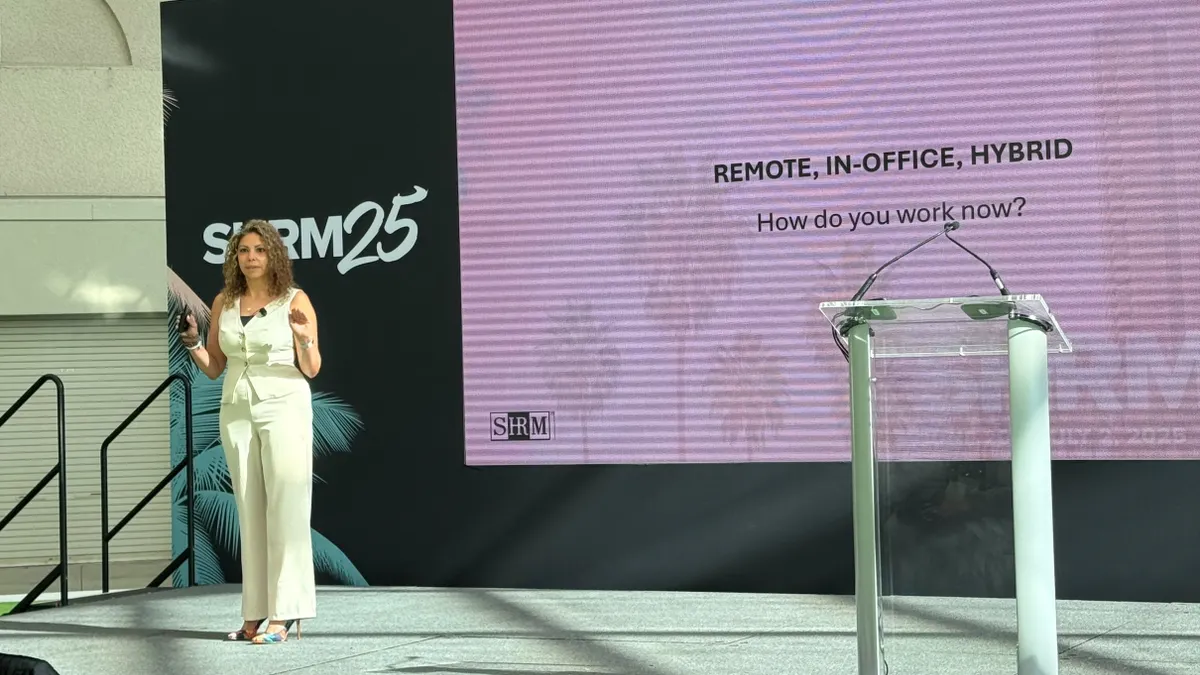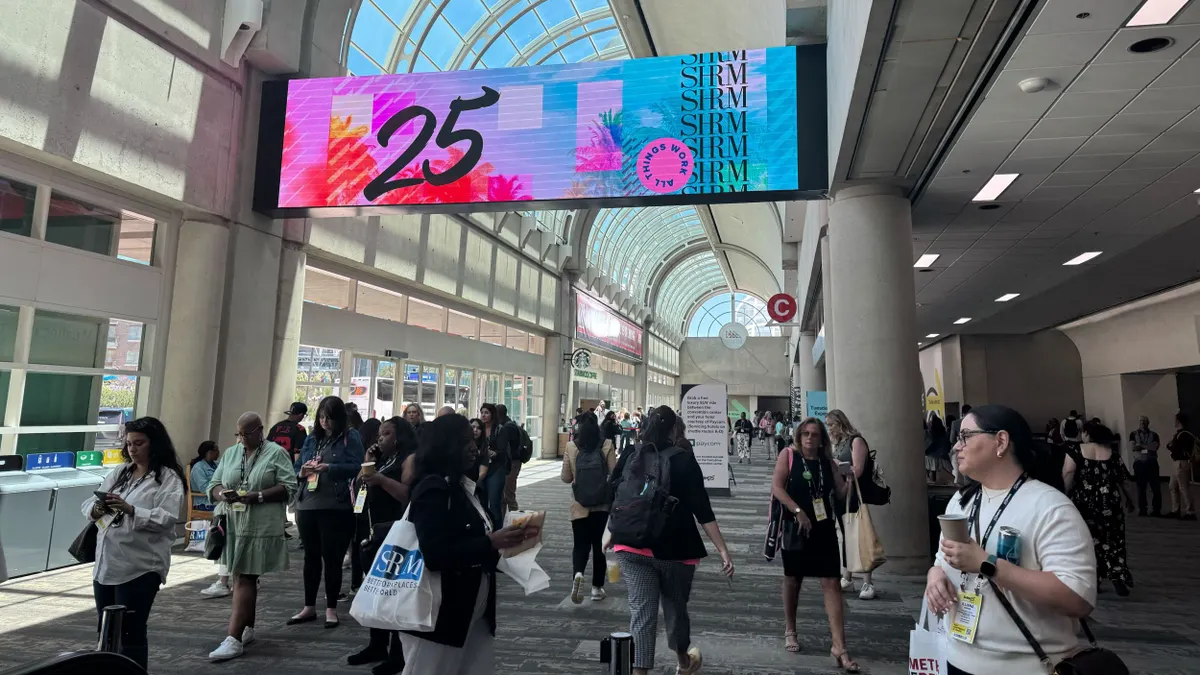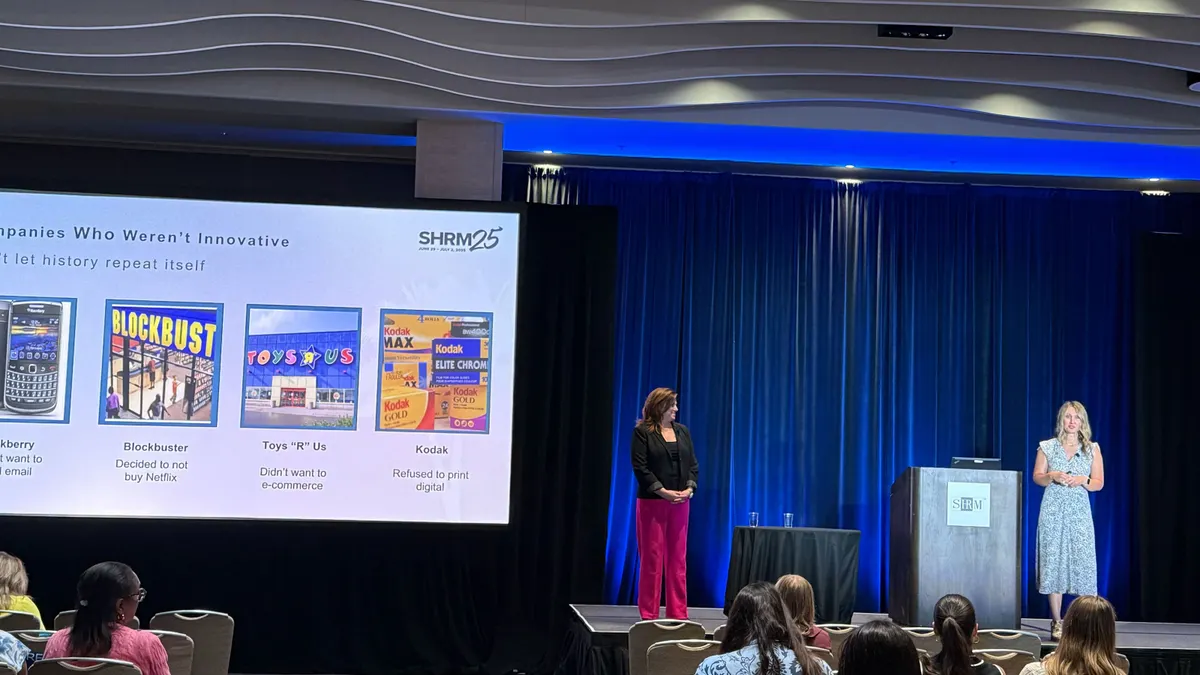SAN DIEGO — As the U.S. population ages and more workers find themselves in the “sandwich generation” — those who care for both their parents and young or dependent children — companies need to start thinking about how to juggle meeting those employees’ needs with business ones, Deborah Hanus, CEO of leave management provider Sparrow, told HR Dive during SHRM’s annual conference.
If not now, soon.
“I think we’re still very much on the leading edge. A lot of companies are not thinking about it yet. They don’t even acknowledge it,” Hanus said. “But five years from now, it’s going to be everyone; it’s going to be like half your workforce.”
Pew Research Center found that already about a quarter of U.S. adults are part of the sandwich generation, according to a survey conducted in late 2021. Among those in their 40s, more than half have a parent aged 65 or older and have either a young child or an adult child they assisted financially in the past year.
“Employers do really need to be thinking about how to retain that part of their workforce,” including what investments they can make in doing so, Hanus said.
Without action, companies risk losing these workers, a May report from Motherly and the University of Phoenix Career Institute found. Half of the 1,000 mothers in the sandwich generation surveyed said they’ve left a position because of their caregiving responsibilities. And more than two-thirds said the benefits offered by their employers weren’t sufficient enough to meet their caregiving needs.
A June report by Prudential Financial also warned of the risks of underestimating workers’ caregiving demands; employees identify caregiving leave as a top benefit, yet only half of employers provide this type of paid leave, the survey of nearly 3,000 full-time employees and 750 employers found.
To that end, an absence and leave expert previously told HR Dive that, as companies make inroads in parental leave benefits, caregiving leave stands to get more attention.
Companies traditionally think having a leave policy covers their bases, but that’s not necessarily true, Hanus said.
“In a lot of caregiving situations, it’s not one and done. You might be caring for someone for 10-plus years,” meaning there needs to be a more flexible, long-term solution, Hanus said.
Companies need to consider the options and decide how, as a team, they want to manage this and develop a philosophy toward caregiving needs, she said. That can involve educating managers and employees and considering flexible work options.
Successful caregiving leave involves a tight communication and partnership loop between the executive team and HR, Hanus said.
Managing caregiving leave is almost like looking at an accommodation, she explained, and requires going through an interactive process to understand the right way to be flexible and have the most impact.
Some workers may have a caregiver with their parents in the morning and just need to take over by mid-afternoon, while others may need to check in every 30 minutes and may not be able to be reasonably accommodated, she said.
“From a company perspective, you also can’t be infinitely flexible,” Hanus said.
Apart from understanding workers’ caregiving needs, employers also should not shy away from continuing performance reviews, she said. “It’s possible that they hired someone with a lot of family needs who also isn’t good at their job.”






















